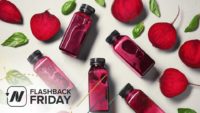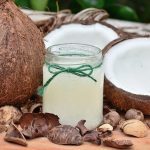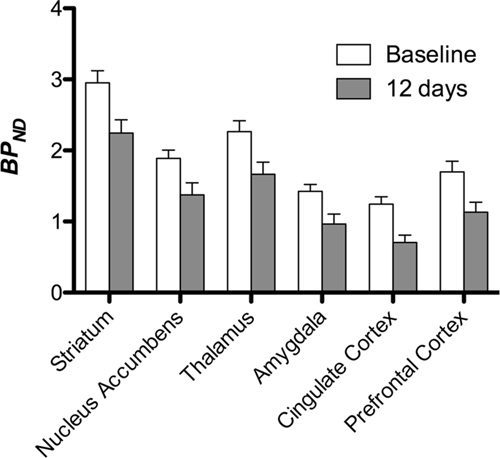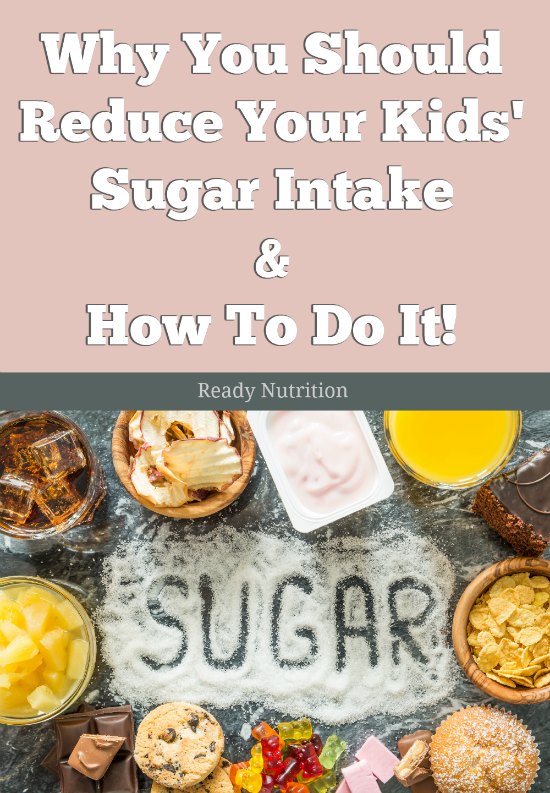By Daisy Luther By Daisy Luther It’s apple season! This is without a doubt one of my favorite times of the year. I love it when the house is fragrant with apples and … Read the rest The post This Week’s Harvest: Apples appeared first on The Organic Prepper. …read more Source: Organic Prepper
By Joy Jensen, staff writer (NaturalHealth365) We all know that eating more fruits and vegetables is a good thing. But, do you know why? For starters, foods like, parsley, blueberries and oranges are packed with flavonoids? To clarify (if you’re new to that term), flavonoids are a group of phytochemicals that have been studied for many years. Now, new research is showing that increasing flavonoid intake has the potential to help protect you from cancer and heart disease. This new research published in Nature Communications took a look at data pulled from the Danish Diet, Cancer, and Health …read more [More]
By AdminM Robert Kennedy, Jr. Assembles Legal Team to Sue FCC over Wireless Health Guidelines Robert Kennedy Jr. Assembles Legal Team to Sue FCC – The team includes RFK, Jr., IRREGULATORs’ Attorney Scott W. McCollough & Dafna Tachover by the Children’s Health Defense Team Robert Kennedy, Jr., Chairman of Children’s Health Defense (CHD) has committed to be proactive on the concerns regarding excessive exposure of our children to 5G and wireless radiation. To fulfill this promise, CHD will be submitting a lawsuit on January 31st against the FCC for its …read more Source: Health Impact News
By Michael Greger M.D. FACLM What is the latest science on the performance-enhancing qualities of nitrate-rich vegetables? …read more Source: nutritionfacts.org
By Michael By Derrick Broze The U.S. Environmental Protection Agency (EPA) has reaffirmed their belief that glyphosate is not a carcinogen, despite initially concluding the chemical was probably carcinogenic…. …read more Source: Natural Blaze
The EPA and states must insist municipalities investigate alternative methods for reuse of sewage wastes. You may not realize it but some foods you eat may have been grown in soil containing toxic sewage wastes. Labeling is not required. In 2019, about 60 percent of sewage sludge from 16,000 wastewater processing facilities in more than 160 U.S. cities has been spread on our soils – farmland and gardens, as well as schoolyards and lawns. The U.S. Environmental Protect Agency (EPA) allows this use of sewage waste, claiming it has beneficial use because it contains properties similar to fertilizer — certain [More]
By Joy Jensen, staff writer (NaturalHealth365) While most health-conscious people realize that coconut oil is actually a super food, for quite some time coconut oil has been demonized by the mainstream media due to its saturated fat content. And, another thing the media “forgets” to tell you is: those saturated fats differ significantly from the (toxic) fats found in most conventionally-raised animal products, and the unique array of fatty acids found in coconut oil actually offers a variety of positive health effects. For example, a deeper look into coconut oil’s role in nutrition and health brings to light even more [More]
By Dr. Mercola If you’re like most people, chances are you’re consuming unhealthy amounts of sugar on a regular basis. Even if you’re not big on candy, most processed foods will provide you with an excessive amount of added sugars. As noted in the BBC One report “The Truth About Sugar,” a serving of Pad Thai noodles contains 9.5 teaspoons of sugar and a package of sweet and sour chicken with rice contains 12.5 teaspoons, which is more than a can of soda. A can of baked beans contains 6 teaspoons of sugar, which would ideally be your grand total [More]
By Michael By Sam Janes, UCL and Peter Campbell, Wellcome Trust Sanger Institute We know that quitting smoking is an excellent way to reduce your risk of developing lung cancer. But until now, experts weren’t… …read more Source: Natural Blaze
By Daisy Luther by Daisy Luther Yesterday, social media giants like Facebook and Twitter, and search engine Google announced their intentions to censor – um, crack down on – so-called “misinformation” about the … Read the rest The post Social Media Networks Vow to CENSOR “Misinformation” About Coronavirus appeared first on The Organic Prepper. …read more Source: Organic Prepper
Dyslexia is not just about reading, or even language. It’s about something more fundamental: How much can the brain adapt to what it has just observed? People with dyslexia typically have less brain plasticity than those without dyslexia, two recent studies have found. Though the studies measured people’s brain activity in two different ways and while performing different tasks, researchers at the Hebrew University of Israel, reporting in eLife, and researchers from MIT, reporting in Neuron, both found that dyslexics’ brains did not adapt as much to repeated stimuli, including spoken words, musical notes, and faces. Both sets of researchers [More]
By Dr. Mercola In the December 2019 interview, “Irregulators vs. FCC: Exposing and Prosecuting a Vast, Illegal Financial Scandal in Telecommunications,”1 Josh del Sol — who directed the documentary films “Take Back Your Power” (a film detailing the dangers of smart meters) and “InPower Episode 1: A Mass Action of Liability” (which reveals how you can refuse smart meters) — talks to Bruce Kushnick and W. Scott McCollough, Esq. about their lawsuit against the Federal Communications Commission (FCC). Vast Corruption Uncovered Kushnick, a telecom analyst, and attorney McCollough, a former Texas assistant attorney general, are part of a group called [More]
SIDS [Sudden Infant Death Syndrome] is the term given to all of the babies who die of an unexplainable death before they turn one year old. SIDS and the DTaP Vaccine “70% of children who have died of SIDS received the pertussis vaccine within 3 weeks before death.” Within this 3 week time period after receiving the vaccine, children’s breathing patterns became stress-induced, wreaking havoc on their respiratory systems (Pages 120 and 121 of Vaccine Safety Manual For Concerned Families and Health Practitioners). This stress-induced breathing, combined with a baby sleeping face down would seem to make it even more [More]
By Guest Contributor by Dave Artman Rural living provides a picturesque life: Quiet surroundings, wildlife all around, forested landscapes, and adventure abound. But with this idyllic life comes a dark downside—this seclusion can … Read the rest The post Rural Living: Essential Safety Tips for Living in Secluded Areas appeared first on The Organic Prepper. …read more Source: Organic Prepper
Toddlers who are glued to a screen at age three are couch potatoes by the time they are five, a study shows. They move for 40 minutes less each day by the time they start primary school than those who had less screen time earlier in life. Researchers say the reduced physical activity may contribute to weight gain and poor health. They suggest parents follow World Health Organization guidelines to limit young children’s screen time to one hour a day. Study leader Dr. Falk Muller-Riemenschneider said: “Reducing screen time in early childhood might promote healthier behaviors and associated outcomes later [More]
By Sara Middleton, staff writer (NaturalHealth365) In November 2019, the U.S. Centers for Disease Control and Prevention (CDC) admitted that more people are contracting and dying from antibiotic-resistant superbugs than anyone previously thought. We can’t say we’re shocked – since we now know that antibiotics are an over-prescribed class of drugs. Fortunately, we have something as simple as tea tree oil that could help put an end to this unnecessary human suffering. Plenty of research suggests that natural antibiotics like tea tree oil, oregano oil, and garlic can be just as effective as synthetic antibiotics at killing harmful pathogens. And [More]
If you apply a chemical to a field of crops, either from a sprayer towed behind a tractor or from above, by an aerial crop duster, that is considered a pesticide. However, if you take that same chemical and coat it on a seed, then plant that seed in the ground, it ceases to be pesticide — at least according to government regulators. This issue of how to define a pesticide is at the center of a growing battle over a regulatory loophole that allows seeds coated with chemicals to be considered “treated articles,” rather than pesticides. …read more Source: [More]
By Dr. Mercola 1 Why might hard water be healthier for your heart than soft water? Because hard water is more acidic Because hard water contains higher levels of zinc and calcium Because hard water contains higher levels of magnesium Research has shown people drinking soft water on a regular basis are more susceptible to lethal arrhythmias than those drinking hard water. One hypothesis that can account for this is magnesium deficiency, as hard water contains higher levels of magnesium than soft water. Learn more. Because soft water is less hydrating 2 Research shows long-term annual vaccination may render young [More]
By Joy Jensen, staff writer (NaturalHealth365) According to the American Sleep Association, over 30% of Americans deal with insomnia, and 10% of the population reports chronic insomnia. For those over the age of 60, those numbers go up to 40-60% of this age group suffering from insomnia. Unfortunately, this common sleep disorder often results in falling asleep unintentionally during the day, which can be particularly dangerous if you’re driving. While there are many different potential causes for insomnia, a recent study found that women who eat a lot of processed grains and sweets have a higher risk of suffering from [More]
By Sara Middleton, staff writer (NaturalHealth365) The number of Americans with nutrient deficiencies or even “subclinical insufficiencies” is high, ranging from 10 to 90 percent depending on the study and nutrient in question. This is exactly why adding high quality nutritional supplements to a balanced diet can help correct these deficits, especially when it comes to low vitamin D levels in the body. In terms of improving your vitamin D status, it’s important to understand that certain nutrients like magnesium, can greatly improve the absorption of vitamin D. In fact, research shows that to enjoy optimal bone (and heart) health, [More]
By Michael Greger M.D. FACLM A calorie is not a calorie—it not only depends on what you eat, but when you eat. …read more Source: nutritionfacts.org
This is the third note in a row about cholesterol, but that’s because it has been featured so much recently in the mainstream media and academic publications. The headline in the UK Times newspaper on January 14th, 2020 was “New cholesterol ‘vaccine’ could save thousands of lives a year” (Ref 1). The BBC headline was “NHS to pioneer cholesterol-busting jab” (Ref 2). The BMJ reported: “Inclisiran: UK to roll out new cholesterol lowering drug from next year” (Ref 3). The media story may have been a UK one, but the drug that it featured is very much a global phenomenon. [More]
By Ethan Huff (Natural News) Things are only getting worse …read more Source: Natural News
By Sara Middleton, staff writer (NaturalHealth365) We’ve reported on the dangers of statins many times on NaturalHealth365. From mood dysfunction to memory loss, the world’s top-selling drug – prescribed to lower blood cholesterol in the hopes of managing or preventing heart disease – comes with many questionable side effects. Now, doctors in the United Kingdom are rushing to test a new cholesterol-lowering drug – only this one is a pricey injection. The new “heart jab” is supposed to work like a vaccine. It contains a drug called inclisiran, and the National Health Service (NHS) of Britain seems extremely hopeful …read [More]
The US National Institutes of Health (NIH) is launching a rush program to develop a vaccine against the China coronavirus. The goal? Have a vaccine ready for human testing in an unprecedented 90 days. NIH is partnering with a US vaccine company, Moderna, Inc. The vaccine is a new type called RNA. According to Reuters (“With Wuhan virus genetic code in hand, scientists begin work on a vaccine,” Jan 24, 2020), “[these are] vaccines based on ribonucleic acid (RNA) — a chemical messenger that contains instructions for making proteins.” …read more Source: Sott health news feed
The vegan diet is low in – or, in some cases, entirely devoid of – several important brain nutrients. Could these shortcomings be affecting vegan’s ability to think? It was the late 1880s in the city of Rajkot, India. The meeting was to take place on the banks of the local river – and discretion was essential. Mahatma Gandhi, who was just a teenager at the time, hadn’t told his parents where he was going; if they had found out, they would have been shocked to death. As it happens, Gandhi was having a picnic. And on this occasion, India’s [More]
By Sara Tipton The evidence is mounting that sugars, especially added sugars in processed foods, are affecting our children’s overall health and longevity. Unfortunately, the massive sugar intake begins when children are young, but there are ways to reduce the amount of sugar our kids consume while still allowing them to enjoy great tasting foods. Researchers have pondered for quite some time whether sugar itself harming health or if it’s the weight gain that comes from consuming sugary drinks and foods mainly what contributes to illness over the long term. And it looks like the answer is both. Extra weight [More]



































